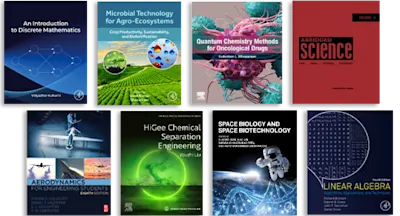
Reliability Fundamentals
- 1st Edition - November 13, 2012
- Latest edition
- Authors: V.M. Catuneanu, A.N. Mihalache
- Language: English
The development of modern technologies has enlarged the scope of quality, to include aspects concerning the time varying performances of systems. The general property of a system,… Read more

The development of modern technologies has enlarged the scope of quality, to include aspects concerning the time varying performances of systems. The general property of a system, to conserve its performance in time, is known as reliability. The concept of reliability, developed on the basis of electronic technology, can be generalized to describe any system, be it technical, biological or even social. This work is concerned with technological systems, but many of its ideas can be applied successfully outside the purely technical field. A comprehensive treatment of the various models and methodologies employed in the reliability field is given. The mathematical, physical and engineering concepts related to reliability are presented from a unitary point of view. Moreover, the book provides the theoretical background for the methodologies of reliability assurance and assessment. A global model of system reliability is specified by classical estimation of its parameters from experimental data. The practical difficulties related to the amount of data needed for an accurate estimation is examined in detail.A major improvement on the accuracy of a model is provided by the application of Bayesian statistical theory, thereby making use of all the information available on the reliability of the system. The next section describes the relationship between reliability and stress. It introduces the models of reliability extrapolation and the theory of accelerated life tests. The global model is extended to systems that are subject to renewal and leads to specific reliability indices of system effectiveness. A comparison is given on structural models of system reliability together with the appropriate methods of analysis. The limitations and the areas of application of different models are clearly outlined.The book maintains a good balance between the theoretical and the practical point of view. It is sufficiently theoretical to cover most technical systems, but is not restricted to purely mathematical aspects. The interpretations and the applications of the models are presented in detail, enabling the practitioner to make direct use of many results.
1. Reliability in the Framework of General System Theory. References. 2. Global Modelling of System Reliability. Reliability measures. Modelling of the aging process. Distribution laws associated with failure mechanisms. Specification of the global model. 3. Bayesian Modelling of System Reliability. Parameter estimation. Expressing a-priori information. Empirical Bayes methods. References. 4. Reliability and Stresses. The stress-strength model. The parameter model. Accelerated life tests. References. 5. System Renewal. Renewal processes. Negative renewals. Stochastically negative renewals. Availability. Renewal policies. References. 6. Structural Reliability. Functional and logical models. System reliability analysis based upon logical models. The Markov chain model. The fault tree model. Concluding remarks on structural analysis. References. 7. Principles of Reliability. References. Index.
- Edition: 1
- Latest edition
- Published: November 13, 2012
- Language: English
Read Reliability Fundamentals on ScienceDirect